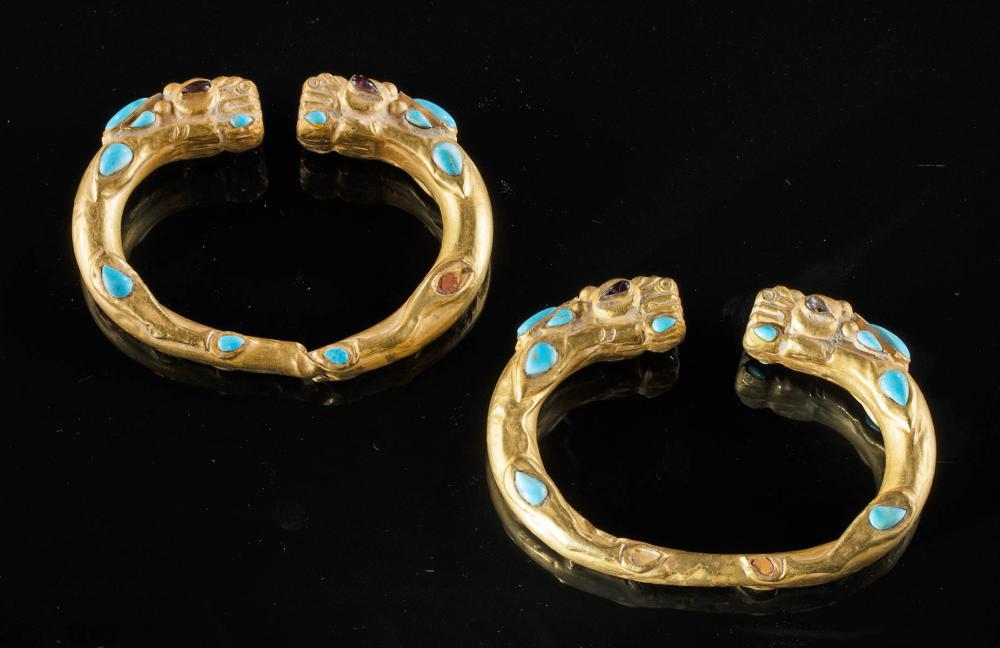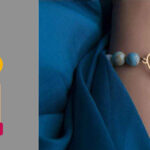
Benefits of Buying Iranian Jewelry Online
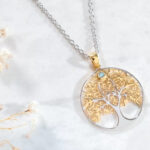
How Iranian Jewelry is Eco-Friendly
A Global Showcase of Persian Craftsmanship
The rich history of Iranian jewelry dates back thousands of years, with pieces that reflect the country’s cultural, artistic, and spiritual traditions. These masterpieces of Persian craftsmanship—made from gold, and silver, and adorned with semi-precious stones—have not only been prized in Iran but have also gained international acclaim. Today, many prestigious museums around the world showcase Iranian traditional jewelry, offering visitors a glimpse into the country’s glorious past and its artistic heritage.
In this post, we’ll explore some of the most renowned international museums that house historical Iranian jewelry, highlighting key pieces and the significance of these collections.
1. The British Museum (London, UK)
The British Museum is home to one of the most extensive collections of Iranian artifacts, including a stunning selection of ancient Persian jewelry. The museum’s holdings span millennia of Iranian history, from the Achaemenid Empire to the Sassanian and Islamic periods, showcasing a wide range of jewelry styles and techniques.
Key Pieces on Display
- Achaemenid Gold Bracelets: These intricate bracelets, dating back to the 5th century BCE, feature winged lion motifs, symbols of power and protection. The craftsmanship of these pieces highlights the Achaemenid Empire’s skill in metalworking.
- Sassanian Seals and Pendants: The Sassanian period (224–651 CE) is represented by gold seals and pendants adorned with intricate designs, including representations of Zoroastrian symbols and mythical animals.
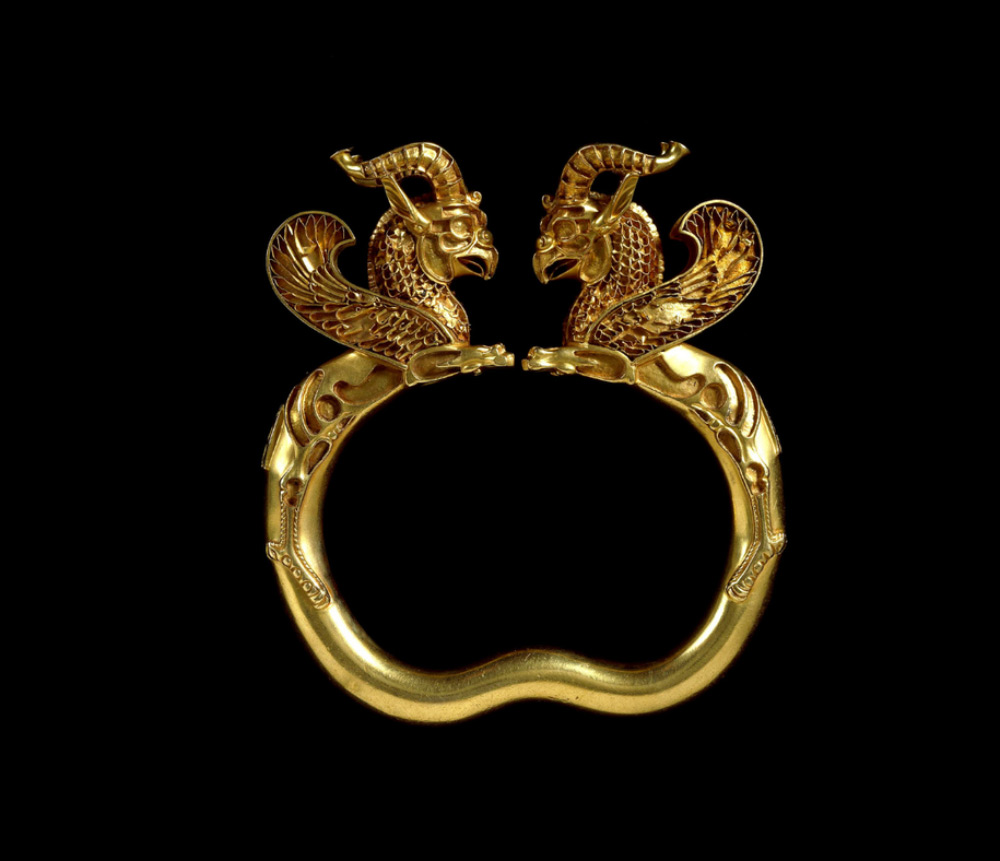
Achaemenid Gold Bracelets in The British Museum
Significance
The British Museum’s collection offers visitors a window into Iran’s ancient civilizations, where gold jewelry played a critical role in both royal display and religious ceremonies. These pieces underscore the artistic and spiritual significance of Persian jewelry across different dynasties.
2. The Louvre Museum (Paris, France)
The Louvre Museum in Paris is home to several important pieces of Iranian jewelry that reflect the elegance and sophistication of Persian artisanship. The Department of Islamic Art houses items from pre-Islamic to Islamic periods, with a particular focus on the Sassanian Empire and Islamic Iran.
Key Pieces on Display
- Sassanian Crowns and Jewelry: The Louvre’s Sassanian collection includes gold crowns, brooches, and pendants that showcase intricate designs inspired by Zoroastrianism and the royal iconography of the time.
- Enamel Jewelry (Minakari): The museum’s collection also includes examples of Persian enamel work (Minakari), demonstrating the delicate and colorful techniques used to adorn gold and silver jewelry in Safavid Iran.
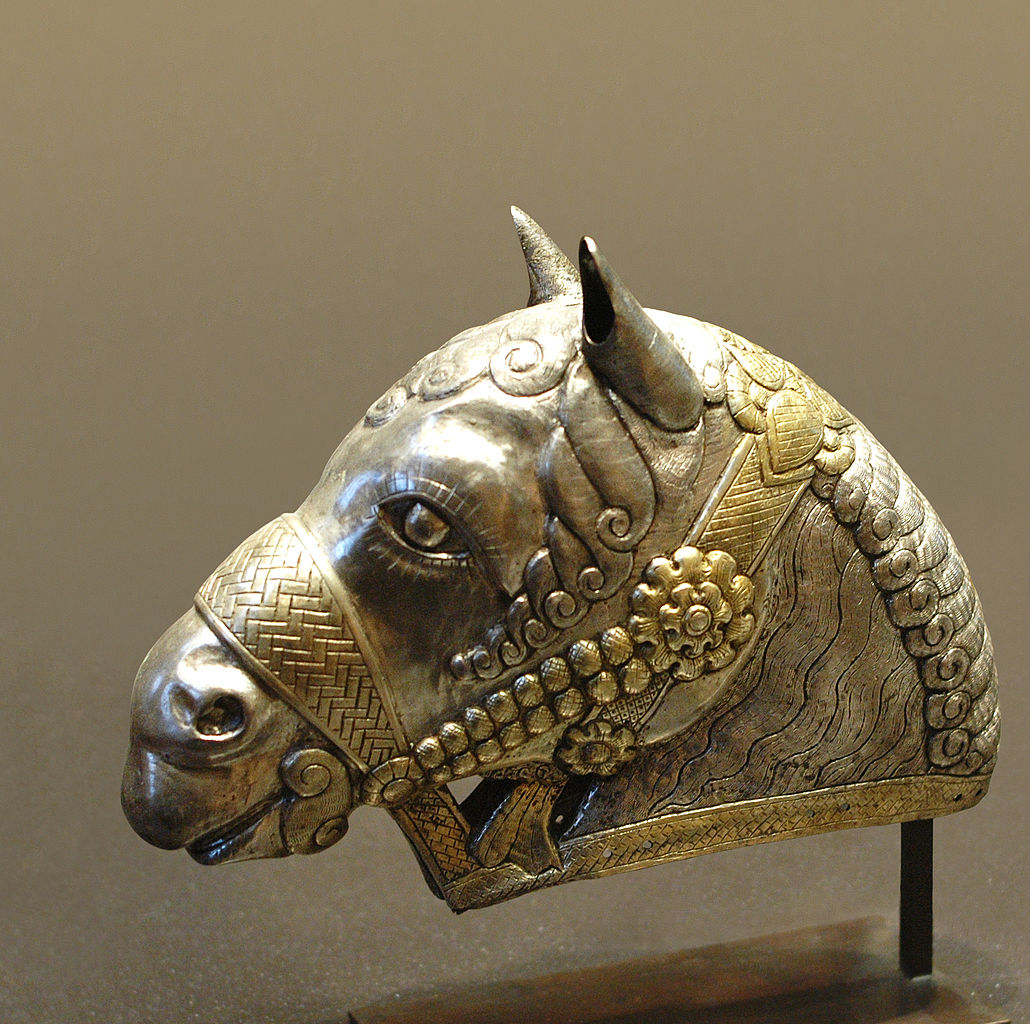
Sasanian Jewelry in The Louvre Museum
Significance
The Louvre’s collection emphasizes the continuity of Persian art and craftsmanship from ancient to Islamic Iran. It showcases the luxury and sophistication of Iranian jewelry, often worn by royalty and the elite as symbols of status and protection.
3. The Metropolitan Museum of Art (New York, USA)
The Metropolitan Museum of Art in New York, widely known as “The Met,” holds an impressive collection of Iranian jewelry within its Islamic Art Department. This collection includes jewelry from the Achaemenid, Parthian, Sassanian, and Islamic periods, illustrating the evolution of Persian jewelry design through the centuries.
Key Pieces on Display
- Parthian Gold Pendants: These pendants, often inlaid with semi-precious stones, reflect the influence of Hellenistic and Roman design on Parthian jewelry. The use of garnets, turquoise, and agate in these pieces highlights the Parthians’ trade connections with distant lands.
- Achaemenid Gold Necklaces: Featuring intricate lion heads and mythical creatures, these gold necklaces exemplify the opulence of the Achaemenid Empire.
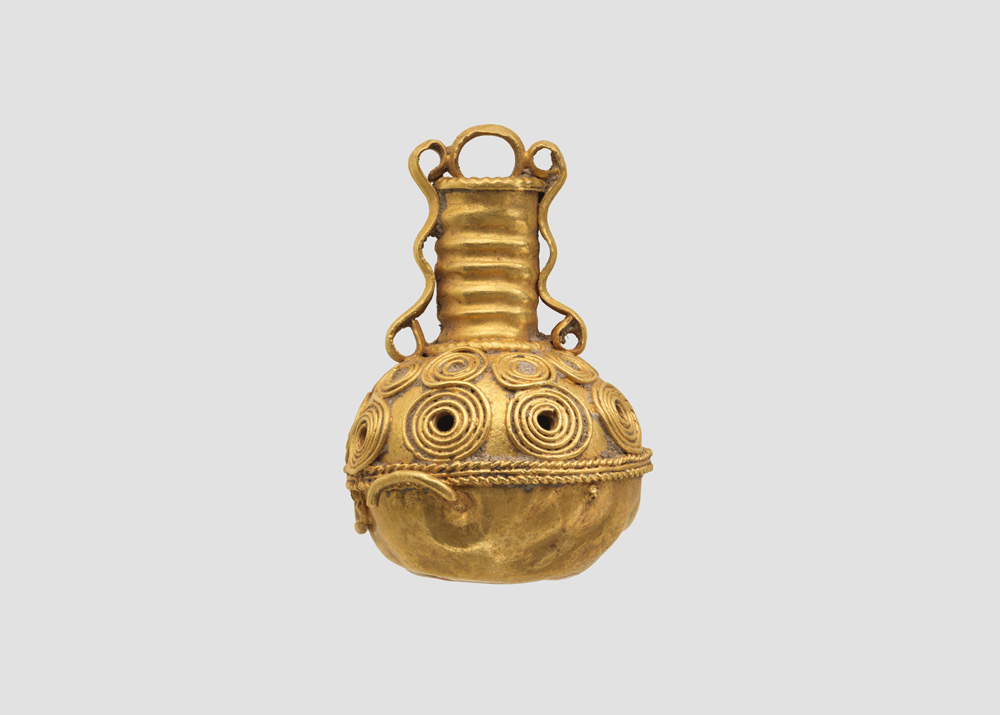
Parthian Gold Pendants in The Metropolitan Museum of Art
Significance
The Met’s collection provides insight into how Iranian jewelry evolved with the influence of foreign cultures while maintaining its distinctly Persian elements. Visitors to the museum can see how Iranian jewelers adapted designs while preserving the symbolism and craftsmanship that defined their work.
4. The National Jewels of Iran (Tehran, Iran)
While not an international museum, the National Jewels Museum of Iran in Tehran deserves mention for its unparalleled collection of Iranian jewelry, including the famed Iranian Crown Jewels. This collection represents some of the most extravagant and historically significant jewelry from Iranian dynasties, including the Safavid, Qajar, and Pahlavi periods.
Key Pieces on Display
- The Darya-ye Noor (Sea of Light Diamond): One of the largest and most famous diamonds in the world, this pale pink diamond weighs approximately 182 carats and is a symbol of Iran’s royal wealth.
- The Peacock Throne: A masterpiece of jewelry craftsmanship, the Peacock Throne is encrusted with thousands of precious stones, including diamonds, emeralds, rubies, and pearls.
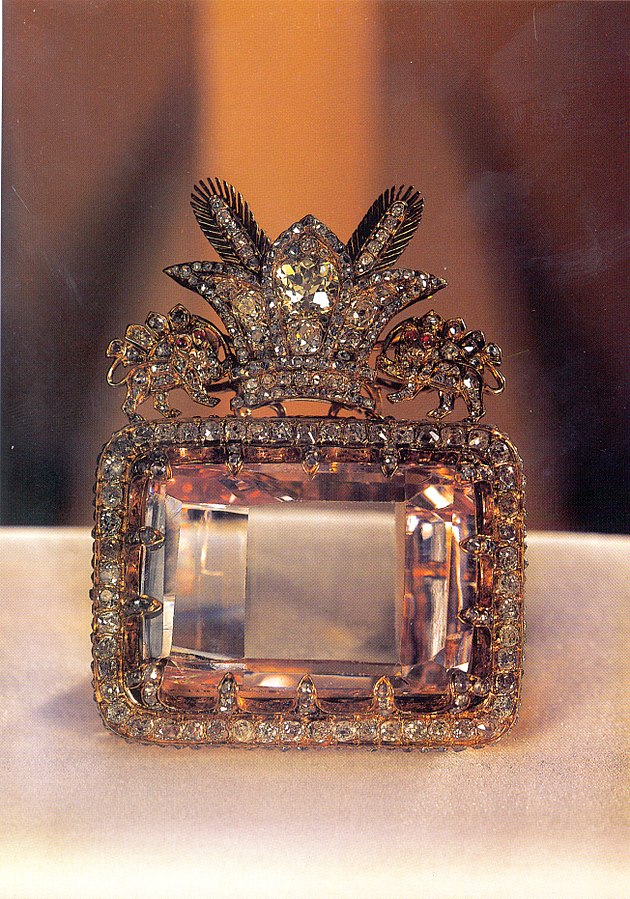
The Darya-ye Noor (Sea of Light Diamond) in The National Jewels of Iran
Significance
The National Museum of Iran’s collection of royal jewels is one of the most important in the world, showcasing the grandeur of Iranian monarchs and their affinity for luxurious jewelry. These pieces reflect both political power and artistic achievement, and they continue to captivate visitors from around the globe.
5. The Victoria and Albert Museum (London, UK)
The Victoria and Albert Museum (V&A) in London is renowned for its extensive collection of decorative arts, including Iranian jewelry. The museum houses an impressive selection of Islamic and Middle Eastern jewelry, with several pieces from Safavid and Qajar Iran.
Key Pieces on Display
- Safavid Enamel Jewelry: The V&A’s collection includes exquisite examples of Safavid enamel work, with gold necklaces and earrings adorned with vivid enamel designs in blue, red, and green. These pieces reflect the opulence and artistic refinement of Safavid Iran.
- Qajar Period Jewelry: Jewelry from the Qajar dynasty often features semi-precious stones like turquoise and garnet, set in intricate gold settings. These pieces blend Persian motifs with Western influences, reflecting the cross-cultural exchanges of the time.
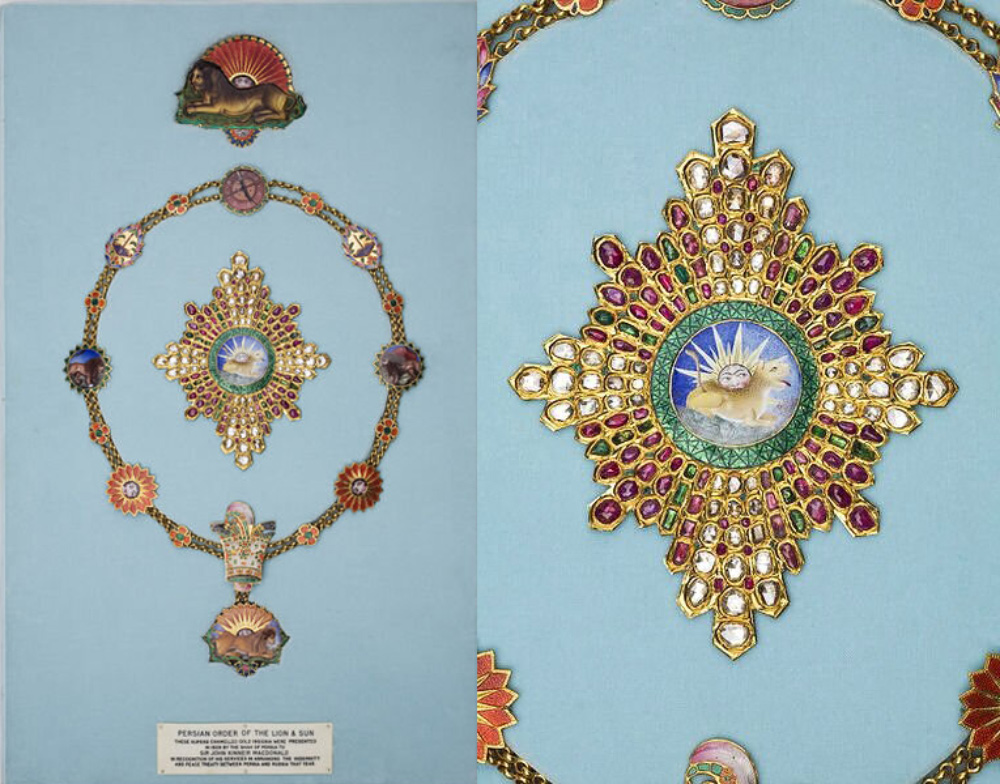
Victoria and Albert Museum Qajar Period Jewelry
Significance
The V&A’s collection showcases the evolution of Persian jewelry during the Safavid and Qajar periods, highlighting the blend of traditional Persian motifs with influences from Europe and India. Visitors can explore how Iranian artisans incorporated new techniques while staying true to their cultural roots.
6. The Smithsonian National Museum of Natural History (Washington, D.C., USA)
The Smithsonian National Museum of Natural History features an exceptional collection of gems and minerals, with a particular focus on precious stones from around the world, including Iranian turquoise. The museum’s collection includes pieces that highlight the importance of semi-precious stones in Iranian jewelry.
Key Pieces on Display
- Neyshabur Turquoise: The museum displays examples of turquoise from Neyshabur, Iran, one of the oldest and most famous turquoise mines in the world. The bright blue color of Persian turquoise has made it highly sought after for centuries.
- Persian Lapis Lazuli: The museum also showcases lapis lazuli, a deep blue stone that was mined in ancient Iran and Afghanistan. Lapis lazuli was often used in royal jewelry and religious artifacts due to its symbolic connection to the heavens.
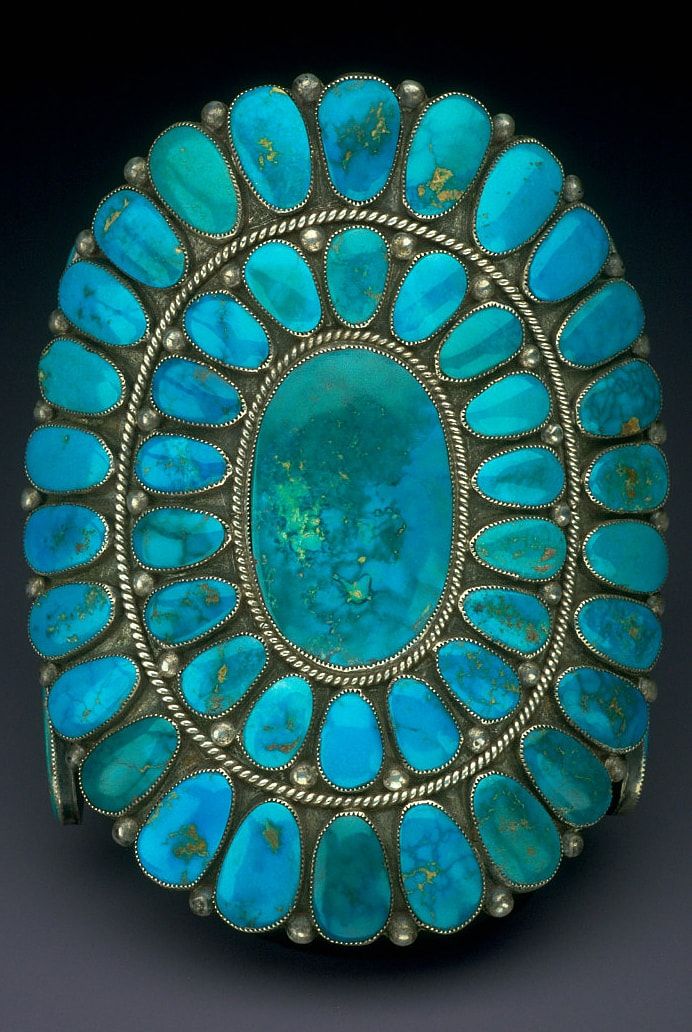
Smithsonian National Museum – Neyshabur Turquoise
Significance
The Smithsonian’s gem collection emphasizes the importance of Iran’s natural resources, particularly its semi-precious stones, in the creation of Persian jewelry. The museum’s focus on the geological origins of these stones offers visitors a deeper understanding of their significance in Iranian art and culture.
Conclusion: Iranian Jewelry’s Place in Global Museums
The presence of Iranian traditional jewelry in prestigious museums across the world highlights the global appreciation for Persian craftsmanship, historical significance, and the beauty of Iranian art. From the British Museum to the Louvre, these collections provide a glimpse into Iran’s rich cultural history and its enduring influence on the world of jewelry design.
At LetsGoYelo, we celebrate the legacy of Persian jewelry by offering authentic pieces inspired by Iran’s artistic heritage. Explore our collection and bring a piece of Iranian tradition into your own life.


